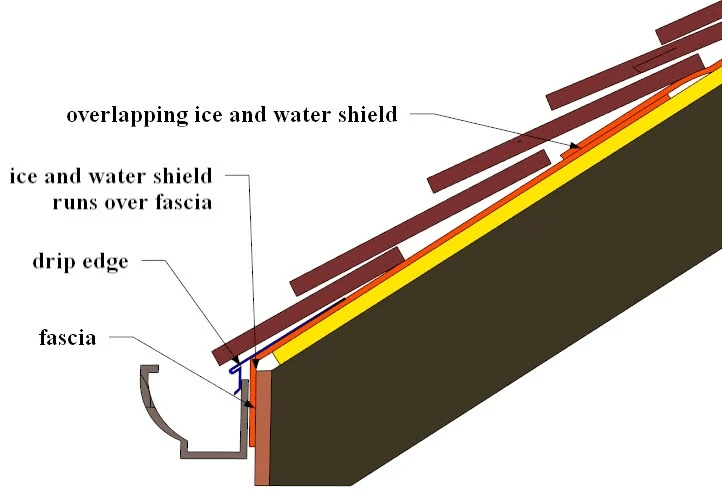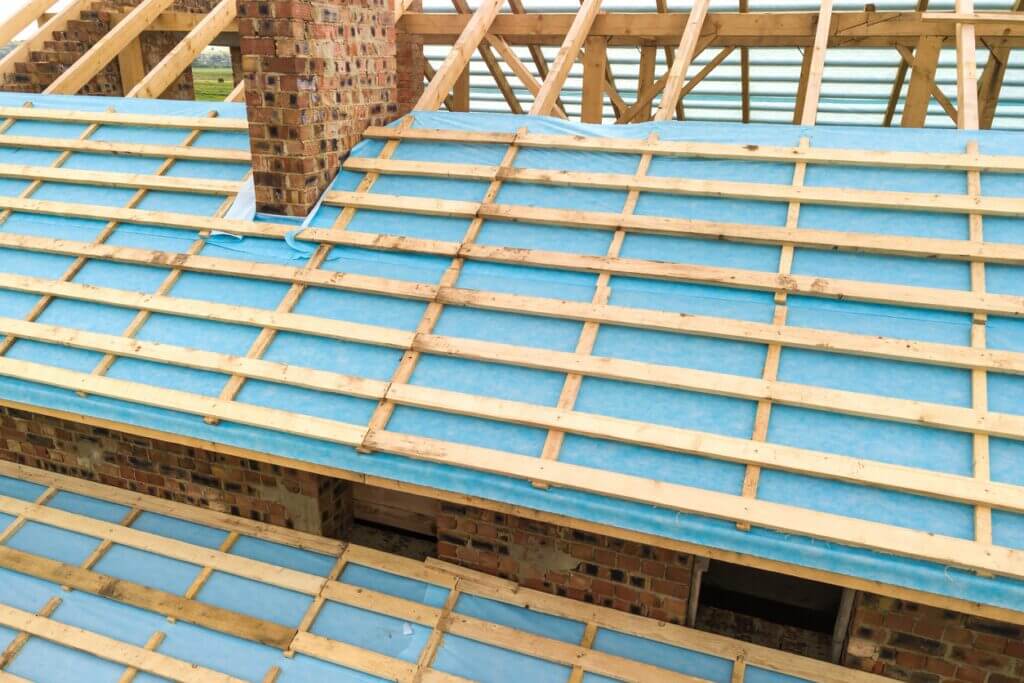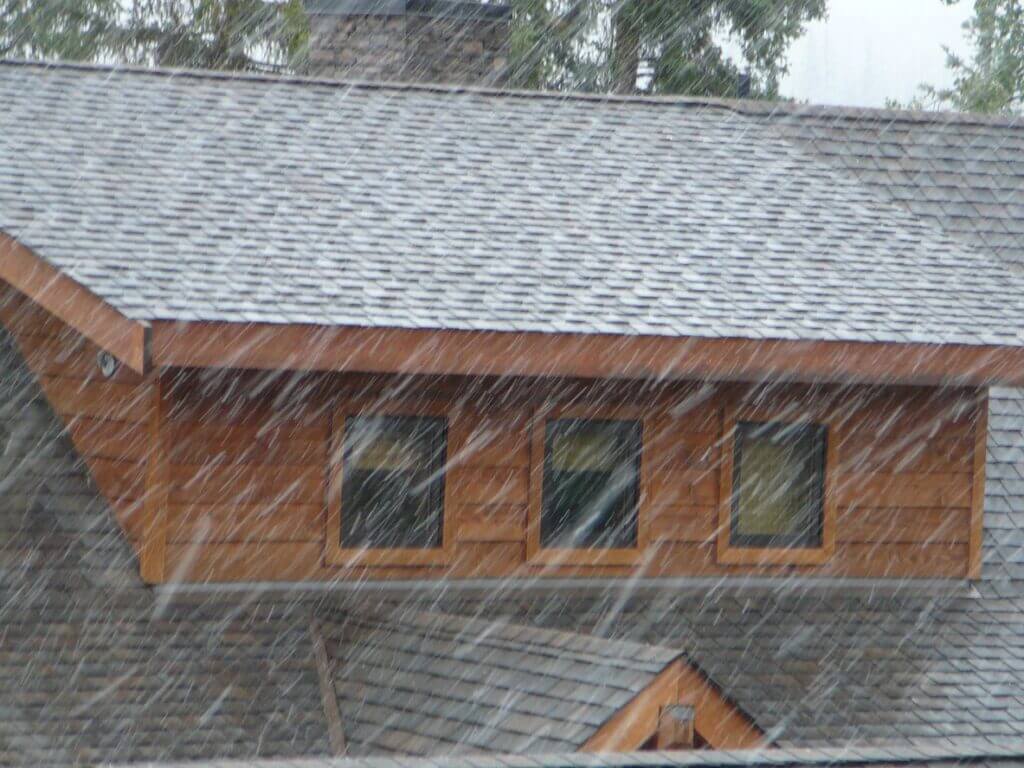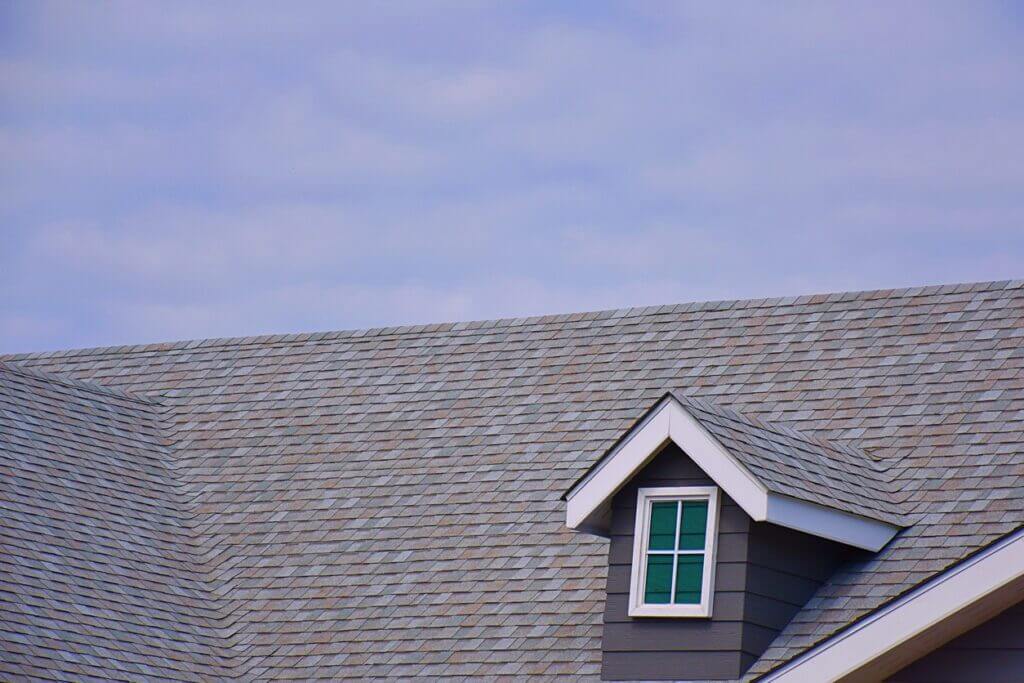
Few components are as crucial to a roof’s longevity as the ones you don’t see, and ice and water shield is one of the most important. This thin, self-adhering membrane sits quietly beneath your shingles, acting as the first line of defense against leaks caused by wind-driven rain, ice dams, and melting snow.
While it may seem like just another layer in the roofing system, the role it plays during extreme weather is vital. So, what makes this barrier so effective, and how does it compare to other underlayment options, such as synthetic materials?
Let’s break down why ice and water shield is more than just an add-on, but your roof’s hidden hero.
What Is Ice and Water Shield for Roofs?

Ice and water shield is a rubberized asphalt membrane designed to adhere directly to your roof deck, forming a watertight seal that protects against moisture infiltration.
Unlike traditional felt paper or even many synthetic roof underlayments, it offers a stick-on application that bonds tightly to both the deck and itself, sealing around nails and fasteners. This self-sealing feature is what makes it such a reliable barrier in vulnerable areas like roof valleys, eaves, around chimneys, and under shingles, where snow and ice buildup is common.
Where traditional felt simply lies flat and synthetic underlayments provide general moisture resistance, ice and water barrier products go further by creating a durable, leak-proof layer that stands up to ice dams, driving rain, and freeze-thaw cycles. This is especially important in colder climates or anywhere storms tend to hit hard.
There are a few types of ice and water shield available, each designed for specific applications:
- Granular Surface: Offers a textured finish and is typically used in valleys or other less visible areas. It’s tough and durable, but not as smooth for shingle layering.
- Smooth surface: Easier to work with under shingles and ideal for wide areas like entire roof decks or low-slope sections. It provides excellent adhesion and flexibility.
- High-Temp Ice and Water Shield: Made for metal roofing or high-heat environments, this version resists degradation caused by extreme temperatures and is often required under metal panels or tile.
When installed properly, ice and water barrier roof systems can dramatically reduce the risk of costly water damage, making them a smart investment in long-term roof protection.
Where Is Ice and Water Shield Installed?

Ice and water shield isn’t applied across the entire roof. In most cases, it’s strategically installed in high-risk areas where water intrusion is most likely. These areas are often exposed to ice dams, pooling water, or heavy runoff. By targeting these vulnerable zones, the ice and water barrier provides maximum protection without unnecessary material waste.
Here’s where you’ll typically find ice and water shield in a roofing system:
1. Eaves and Gutters (To Prevent Ice Damming)
The most common place to install ice and water shield is along the eaves, just above the gutters. This is where ice dams often form, even in places like Marietta or Alpharetta during cold snaps, causing melting snow to back up under shingles and leak into the home.
Installing a shield in this area helps prevent that by forming a watertight layer that stops water from entering beneath the roof surface, even when it refreezes.
2. Valleys and Roof Transitions
Roof valleys, where two slopes meet, are natural channels for water runoff. These areas experience concentrated water flow, making them especially vulnerable to leaks. Applying an ice water shield roof membrane along the valleys ensures that even in heavy rains or during snowmelt, water doesn’t sneak beneath the shingles.
3. Around Chimneys, Skylights, and Dormers
Any structure that protrudes through the roof creates a weak point where water can enter. By installing an ice and water barrier around chimneys, skylights, and dormers, roofers create a seal that protects against leaks from wind-driven rain or melting snow. These features often have flashing, but the shield adds an extra layer of defense.
4. Along Low-Slope Areas
Roofs with a low pitch (typically under 4:12) don’t shed water as quickly as steeper ones. Because of this slower drainage, water has more time to seep into any gaps. Ice water shield is often applied across the entire surface of low-slope sections to ensure complete waterproofing in areas that are more prone to standing water.
5. Rake Edges in Storm-Prone Areas
The rake edge is the sloped edge of a gable roof, and in regions with high winds and heavy storms, these edges are often exposed to wind-driven rain. Ice and water barrier roof membranes are sometimes applied along rake edges to prevent water intrusion during extreme weather events, especially in coastal or hurricane-prone areas.
Ice and Water Shield vs. Synthetic Roof Underlayment

A common point of confusion for homeowners is whether they need an ice and water shield or a synthetic underlayment. It’s a great question, but it often frames the two as competitors when they are actually teammates. For the vast majority of homes, the best roofing system doesn’t use one or the other, but it uses both, working together to provide complete coverage.
To understand why, let’s look at a head-to-head comparison.
Feature | Ice and Water Shield | Standard Synthetic Underlayment |
Primary Material | Sticky, rubberized asphalt membrane. | Woven polypropylene or similar polymer. |
Installation | Self-adhering (peel-and-stick). | Mechanically fastened (with cap nails). |
Waterproofing | Waterproof. Creates a sealed barrier. | Water-resistant. Sheds bulk water. |
Sealing Ability | Self-sealing. Forms a gasket around nails. | Not self-sealing. Fasteners create holes. |
Primary Use | Targeted protection for critical areas (eaves, valleys, penetrations). | General protection for the entire roof field. |
Cost | Higher cost per square foot. | Lower cost per square foot. |
Combining Both for Full Roof Protection
While it may seem like you need to choose between an ice and water barrier and synthetic underlayment, many roofing professionals recommend using both together for maximum effectiveness. The most common approach is:
- Install Ice and Water Shield in high-risk areas such as eaves, valleys, penetrations (chimneys, skylights), and low-slope sections.
- Use Synthetic Underlayment on the remaining roof deck for a lightweight, breathable, and water-shedding base layer beneath the shingles.
This combination ensures that the most vulnerable parts of your roof have enhanced leak protection, while the rest of the deck benefits from a cost-effective, durable layer. In climates with heavy rain, snow, or high winds, this layered system provides peace of mind and extends the life of your roofing investment.
So while ice water shield roof membranes deliver superior waterproofing where it’s needed most, synthetic underlayments complete the system, making them complementary, not competing, solutions.
Benefits of Ice and Water Barrier

While it might add a small amount to the upfront cost of a new roof, the long-term advantages of installing an ice and water barrier are undeniable. This isn’t just an add-on; it’s a critical investment in the health of your home and your peace of mind.
Here are the key benefits you gain by including it in your roofing system.
1. Leak Prevention in High-Risk Areas
This is its number one job. The ice and water shield is specifically engineered to stop leaks where they are most likely to begin.
By creating a waterproof seal against ice dams at the eaves and managing the heavy runoff in roof valleys, it neutralizes your roof’s biggest threats. This proactive defense can prevent thousands of dollars in water damage to your attic, insulation, ceilings, and walls.
2. Self-Sealing Around Nails and Fasteners
Every nail used to attach your shingles, and there can be thousands of them, is a tiny hole in your roof’s water-shedding layer. With standard underlayments, these are all potential entry points for water.
The rubberized asphalt in an ice water shield completely changes the game. It actively grips and seals around every fastener that penetrates it, turning each potential leak point into a watertight seal. This feature alone is a massive upgrade in protection.
3. Acts as a Secondary Water Barrier in Storm-Heavy Regions
In regions that experience severe weather like powerful thunderstorms or coastal storms, wind can be a roof’s worst enemy. High winds can lift or even tear off shingles, leaving your roof deck exposed.
If you have an ice and water barrier installed, it acts as a tough, fully-adhered secondary barrier. Even with shingles missing, this membrane will remain stuck to your roof deck, keeping water out until you can get repairs done.
4. Peace of Mind for Aging Homes or Complex Rooflines
If you have an older home that may have settled over the years, or a roof with a complex design featuring multiple dormers, valleys, and intersecting pitches, your risk of leaks is naturally higher.
Each transition point is a potential weak spot. Installing a robust ice and water barrier roof system in these areas provides an invaluable layer of insurance, giving you confidence that every complex angle and seam is sealed tight.
5. Reduces the Likelihood of Deck Rot and Mold
The most insidious damage from a roof leak is often the kind you don’t see right away. A slow, persistent leak can saturate the wooden roof deck, leading to rot that compromises the structural integrity of your roof.
That trapped moisture is also the perfect breeding ground for mold and mildew in your attic. By preventing these small water intrusions from the start, a snow and ice shield directly protects your roof’s structure and helps maintain healthy air quality in your home. It’s the ultimate example of an ounce of prevention being worth a pound of cure.
Common Roof Issues Prevented by Ice & Water Shield

An ice and water shield is your roof’s best defense against some of the most common and costly roofing problems homeowners face.
Here are the specific issues it’s designed to prevent.
Ice Dams and Water Backup Under Shingles
The Problem: During winter, ice dams can form along your roof’s edge, blocking melting snow from draining properly. This trapped water pools and seeps upward beneath your shingles, finding its way through the seams and nail holes in the underlayment, and eventually into your attic and home.
How It’s Prevented: An ice and water barrier creates a seamless, waterproof membrane along the eaves. When water backs up behind an ice dam, it simply sits on top of this impenetrable layer instead of your wood decking, preventing it from ever reaching the inside of your home.
Leaks From Wind-Driven Rain
The Problem: A standard sloped roof is designed for water that flows downwards. But during a severe storm, wind can drive rain sideways or even upwards, forcing it under the edges of your shingles along the sides of your roof (the rakes).
How It’s Prevented: By installing a strip of ice and water shield along these vulnerable edges, you create a seal that blocks this horizontal water intrusion. It ensures that even in gusty, driving rain, water can’t get past this last line of defense.
Chimney and Valley Leaks
The Problem: Roof valleys and chimneys are notorious weak spots. Valleys channel huge amounts of water, stressing the seams, while chimneys require complex metal flashing that can fail over time. A small breach in the flashing is all it takes for a persistent leak to start.
How It’s Prevented: The ice water shield acts as a flexible gasket underneath the metal flashing. It seals the awkward transition between the roof deck and the chimney or the seam in the valley. If the primary flashing ever fails, this secondary waterproof layer is there to catch the water.
Rotten Roof Decking Near Gutters
The Problem: This is a direct result of the issues above. Constant exposure to moisture, especially in storm-prone areas like Atlanta and Cartersville, leads to rotting roof decking, which weakens structural integrity and invites mold. Over time, this wood becomes soft, spongy, and begins to rot, leading to major structural repairs.
How It’s Prevented: The snow and ice shield isolates the wood decking from this chronic moisture. By keeping the roof’s edge completely dry, it preserves the structural integrity of your home and helps you avoid thousands of dollars in wood rot repair.
Skylight and Flashing Area Failures
The Problem: Skylights, vents, and other roof penetrations are common sources of leaks. The seals can degrade under harsh UV exposure, or the flashing can be damaged or improperly installed, allowing water to sneak in.
How It’s Prevented: Professional roofers wrap the opening for the skylight or vent with an ice and water barrier before installing the unit itself. This creates a waterproof “pan” under the main flashing. According to the National Roofing Contractors Association, proper flashing is a key part of regular roof maintenance, and this under-layer provides a critical backup, ensuring that even if the primary flashing fails, your home stays dry.
Do You Need Ice and Water Shield in Georgia?
It’s a fair question we hear all the time: “Do I really need an ice and water shield in Georgia? I thought that was for snowy climates up north.”
This is a common myth. While the “ice” part of the name gets the most attention, the “water” component is crucial for protecting homes against Georgia’s specific weather challenges.
While we don’t get feet of snow, North Georgia’s winters are characterized by unpredictable freeze-thaw cycles. Temperatures frequently dip below freezing at night and rise during the day, which is the perfect recipe for creating small but damaging ice dams at your eaves.
More importantly, every Georgia homeowner knows about our intense spring and summer thunderstorms. These storms bring torrential, wind-driven rain that can easily overwhelm standard defenses. As any guide on storm preparedness, like those from the UGA Extension, will tell you, securing your home’s envelope is critical.
An ice and water barrier provides that essential seal in your roof’s most vulnerable areas, like valleys, chimneys, and rake edges, against the powerful, sideways rain that these storms unleash.
So, yes. An ice and water shield is a wise investment for any Georgia roof. It’s affordable insurance against both our occasional winter ice and our guaranteed summer downpours.
Conclusion
From preventing leaks caused by ice dams and wind-driven rain to reinforcing vulnerable areas around chimneys and valleys, ice and water shield plays a vital role in prolonging the life of your roof.
It’s not just for homes in snowy regions. Georgia’s unpredictable winters, sudden storms, and freeze/thaw cycles make this hidden layer a smart and practical investment for any homeowner.
Whether you’re building a new roof or upgrading an existing one in Atlanta, Alpharetta, Marietta, or Cartersville, installing an ice and water barrier in the right spots offers long-term protection and peace of mind.
Ready to safeguard your home with expert roofing solutions? Contact us today to schedule an inspection or learn more about how we incorporate ice and water shield into our roofing systems. Let us help you build a stronger, leak-resistant roof, one layer at a time.
